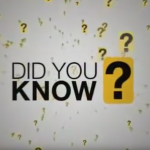mobile learning
/Mobile voice and data communication is more and more accessible and affordable in developing countries. Only in Africa there are more than 280 million mobile phone subscriptions. People who had never access to a phone landline, a computer, or a car own now a mobile phone. Organisations take this communication channel serious and start to connect :
– The UN Foundation recently published an inspiring report on m-Health for Development titled: The opportunity of Mobile technology for Healthcare in the Developing World.
– Unicef Innovation launched a platform for data collection, logistics coordination and communication allowing any mobile phone to interact with the web.
– Kiwanja.net specialises in helping out organizations to use mobile applications for social change. Frontline sms and NgOMobile are good illustrations of this.
– MobileActive is a growing community that documents interesting practices on how to effectively use mobile phones for social change.
 If this is a widely used information and communication device, how can we connect this with our daily practice at ITC-ILO which is learning and training?
If this is a widely used information and communication device, how can we connect this with our daily practice at ITC-ILO which is learning and training?
After having explored several mobile cases in the Lifelong E-Learning course we would like to explore more potential use of mobile learning within ITC-ILO. In the last LED-conference mobile phones were used to enhance public interaction with the expert panel of speakers, but can you think of other useful examples where mobile applications would support learning and training activities? Let us know.

Additional background articles:
– Collaborative learning across continents
– Mobile learning in developing countries
– Closing the digital divide






